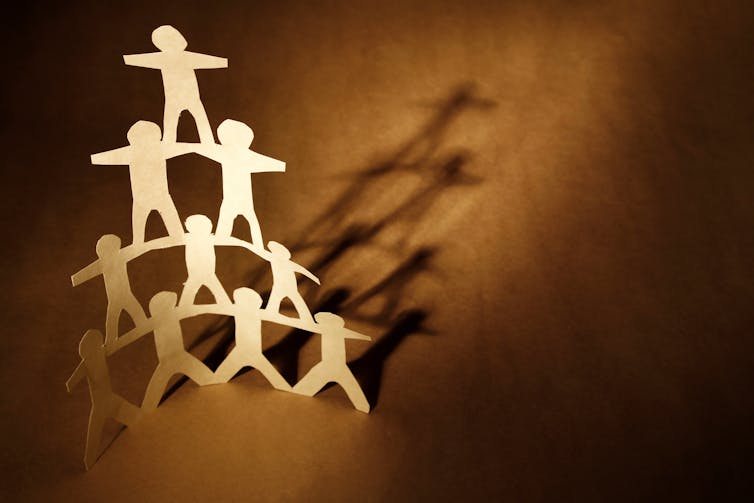

Dr Lisa Sugiura, Associate Professor in Cybercrime and Gender, writes for The Conversation about the question which is currently dividing social media.
Would you rather find yourself alone in the woods with a bear or a man? This is the question currently . Based on the responses online, it looks like most women answering the question say they would choose the bear, a decision that is .
The reactions show some men donŌĆÖt understand womenŌĆÖs experiences. The assertion that women would prefer to encounter a bear is based on evidence about the rate of male violence against women, and on a lifetime of learning to fear and anticipate this violence. This is especially true of sexual violence, something which would not be associated with encountering a bear.
According to the World Health Organization, ŌĆō around 736 million globally ŌĆō will have experienced sexual or physical violence by an intimate partner or sexual violence from a non-partner in their lifetime. This figure has largely remained unchanged over the past decade.
Being attacked by a bear is much less common, with only over 15 years, and very few . And bears tend to avoid humans, attacking only when provoked or protecting their young.
This is not about generalising or fearing all men. Women know that not all men are dangerous. But women donŌĆÖt know which men they should fear, only that male violence and male entitlement to womenŌĆÖs bodies is something that they have to be on guard for.
Women are of sexualised violence, and men are overwhelmingly the perpetrators (including ). There are enough men who have hurt or are capable of hurting women, and women have no way of knowing which ones these are. While much violence against women comes from men they know, the risk of danger from men they donŌĆÖt know is something that informs their day-to-day lives.
For example, research shows that women change their behaviour ŌĆō making certain decisions about the routes they take or what they wear ŌĆō to avoid harassment or abuse from men in public. Scholars such as Fiona Vera-Gray refer to this as .
WomenŌĆÖs view of men is also coloured by their non-violent actions that harm women. Clearly, bears also do not contribute to or uphold systemic sexism and misogyny, but most men do.
My on misogynistic online groups has explored how men engage in acts against women that reinforce gender inequality.
Writer Emma Pitman has described this phenomenon using the analogy of a . The choices of some men to stay silent about abuse is the base of the pyramid, holding up other men who engage in misogynistic jokes or commit violence.
The overall effect, whether deliberate or via ignorance or indifference, is to normalise and support the actions of male sexual predators and domestic abuse perpetrators.
This culture props up the men who are silent bystanders, observing sexism, harassment or abuse but doing nothing, the men who make or laugh along with the sexist or rape jokes, those who are rape apologists and blame women for their sexual victimisation, those who become aggressive when women turn them down, those who stalk, control and abuse women, and those who are rapists, sexual harassers and murderers. This continuum of misogyny is womenŌĆÖs everyday reality ŌĆō and at no point do bears feature.

Men on the defensive
Men are generally surprised, defensive even, when the subject of male violence against women is discussed. This is often where people invoke the response ŌĆ£not all menŌĆØ.
When women took to social media to express their anger and devastation following the murder of by a police officer in 2021, #NotAllMen trended online. Meanwhile, police not to walk alone at night, placing the burden of avoiding violence on women.
This conversation is about privilege, and not recognising it. Many men are able to move through their daily lives not being worried that they are going to be attacked or raped, can walk alone late at night without taking any safety precautions or even not having such thoughts cross their minds, and do not feel their hearts beat faster if they hear footsteps behind them. It may not be all men, but it is all women, who live smaller lives because of the threat of some menŌĆÖs violence.
These discussions are an opportunity for men to understand womenŌĆÖs genuine fears and to be part of the solution rather than the problem.
, Associate Professor in Cybercrime and Gender,
This article is republished from under a Creative Commons license. Read the .
More articles from The Conversation...
The Conversation is an independent source of news analysis and informed comment written by academic experts, working with professional journalists who help share their knowledge with the world.
US sanctions on Iranian hackers highlight growing concern about the Islamic RepublicŌĆÖs cyberwarriors
30 April 2024
5 minutes

Russia has tightened its hold over the Sahel region ŌĆō and now itŌĆÖs looking to AfricaŌĆÖs west coast
30 April 2024
5 minutes

Fallout: an expertly crafted TV adaptation that manages to incorporate some of the best elements of gameplay
Peter Howell
25 April 2024
5 minutes

